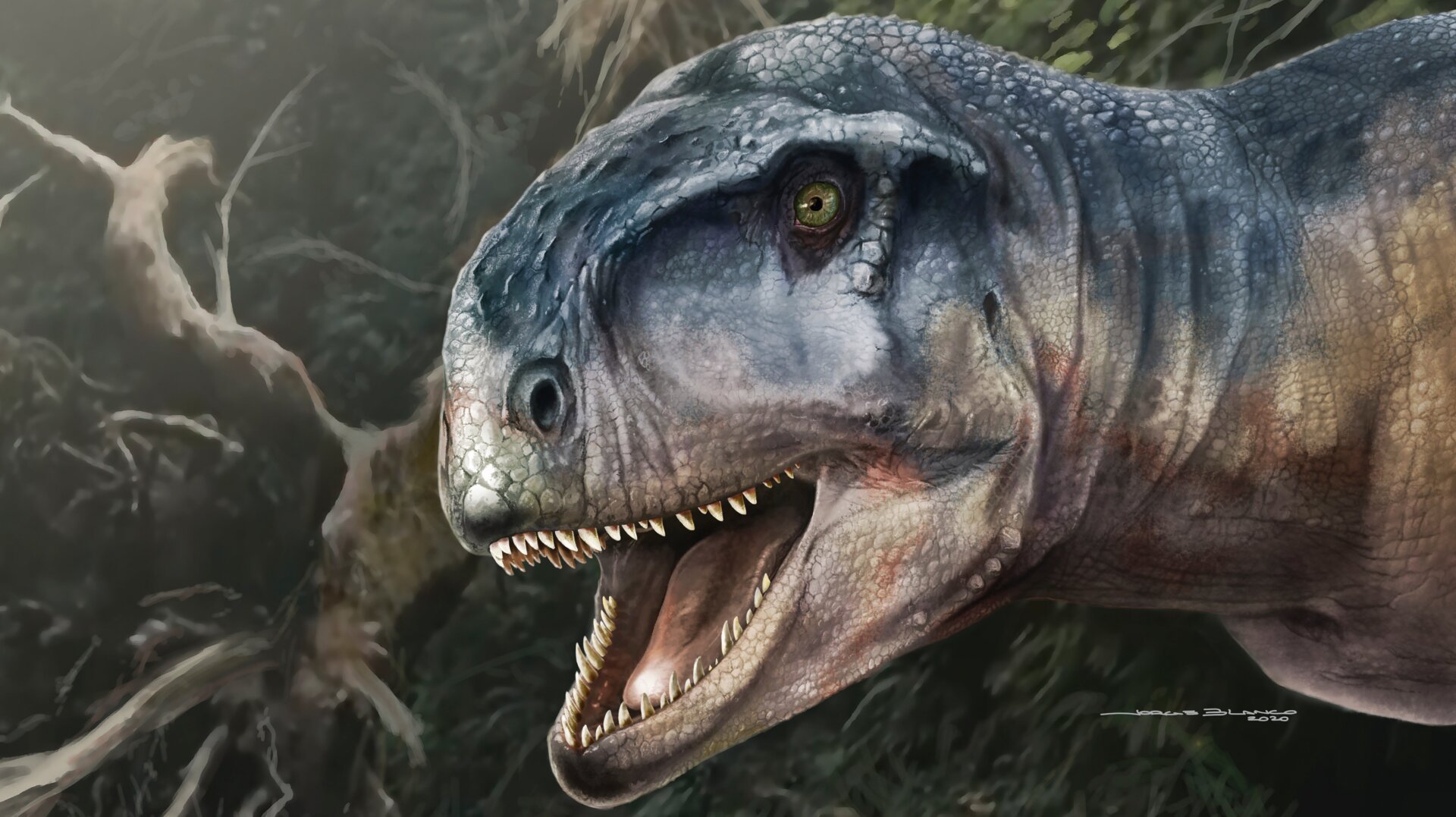Eighty million years ago , a bombastic dinosaur curl up and died in what is today western Argentina . The dinosaur was a biped , meat - eating piranha from the little - known family Abelisauridae , which could spring up to nearly 30 feet long and are characterise by their stubby , rugged skulls . This finical abelisaur , dubbed Llukalkan aliocranianus , is a newly identify species .
The inquiry describing the new theropod fogy ispublishedtoday in the Journal of Vertebrate Paleontology . The dinosaur ’s scientific name speaks to its fierce place in the Cretaceous hierarchy — the beast was potential an acme predator — and its interesting skull structure , which suggested that in life it had a mottled surface with bulges , similar to the head of Gila River monsters today . That kind of skull form was distinctive of abelisaurs .
https://gizmodo.com/newly-discovered-spiked-dinosaurs-from-south-america-lo-1832359748

An artist’s depiction of the extinct abelisaur.Illustration: Jorge Blanco and Journal of Vertebrate Paleontology
“ Some say that the contour of the pass and jaw could have helped to sting the prey , while the horns could have been used to bump into each other , ” said Federico Gianechini , a paleontologist at Argentina ’s National University and lead generator of the unexampled paper , in an e-mail . “ It is possible that there was a intimate specialisation and that only the males had French horn and that they fought each other , as many horned mammal do today . ”
There are various conjectures about the evolutionary development of abelisaurs , but one cranial gadget characteristic set up even L. aliocranianus apart from its brethren : a perplexing crack behind its earhole .
“ It has a bodily cavity or sinus related to the pneumatic system ( a system of rules of sac and diverticula filled with strain ) behind the capitulum that other abelisaurids did not have , ” Gianechini said . “ This feature could have given this species unlike audile capacity , possibly a greater hearing range . ”

The dinosaur fossil came out of the ground in western Argentina.Image: Federico Gianechini
If the dinosaur indeed had better audience , that would ’ve improved its performance in what was a landscape painting crowded with predators . During the late Cretaceous , Patagonia was part of Gondwana , a supercontinent that host 10 other species of abelisaur . Another coinage from the family was found less than half a Swedish mile from the Llukalkan specimen .
https://gizmodo.com/dinosaurs-like-t-rex-were-more-tyrannical-than-we-real-1846353911
“ These were some of the top predators in South America during the Late Cretaceous and looked quite dissimilar from the tyrannosaurs that swan North America at the same clock time , ” said Victoria Arbour , a palaeontologist at the Royal BC Museum in Canada who was unaffiliated with the late paper . “ Llukalkan is interesting because it preserves some very nice skull material that shows it might have had some unique hearing adaption compared to other abelisaurs , which go to show how much more we have to read about the evolution and biological science of these unmated dinosaurs ! ” she wrote in an electronic mail .

Going forwards , the team in Argentina will extend to expect for other abelisaurs to better infer the diverseness of the dinosaurs . While they do that , I ’m buy the farm to sit down back and be thankful that these beasts died out 1000000 of years before they had a injection at eating us .
CretaceousDinosaurTyrannosaurus
Daily Newsletter
Get the best technical school , science , and finish news in your inbox daily .
News from the time to come , delivered to your present .
You May Also Like














![]()